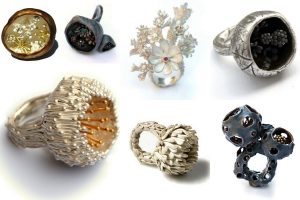When you’re selecting a piece of jewelry, you’re not just choosing an accessory—you’re making a deeply personal statement about who you are and how you want the world to perceive you. The colors and gemstones you wear can dramatically influence both your emotional state and others’ impressions of you, whether you’re aware of it or not. From the passionate red of a ruby to the calming blue of a sapphire, each hue carries its own psychological weight and cultural significance. Understanding this hidden language of color in jewelry design can transform how you approach your next piece and what it means to you personally.
The Cultural Meanings of Colors
In different cultures worldwide, colors carry distinct symbolic meanings that profoundly influence jewelry design and consumer preferences. You’ll find that red signifies luck and prosperity in Chinese culture but represents passion in Western societies. White symbolizes death in some Asian cultures while suggesting purity in others. Purple traditionally connects to royalty, while gold universally represents wealth and status across civilizations.
Emotions Behind Gemstone Choices
The human mind forms powerful emotional connections to specific gemstones, driving many jewelry purchase decisions beyond mere aesthetics. You’ll notice how rubies trigger feelings of passion and liveliness, while sapphires evoke trust and loyalty. Pearls connect to purity and innocence in your subconscious, and diamonds symbolize strength and clarity in your decision-making process. Each gemstone activates distinct neural pathways and emotional responses.
Personal Expression Through Jewelry
Choosing jewelry serves as a powerful form of nonverbal communication, revealing deep insights about your personality, values, and emotional state. When you select specific pieces, you’re engaging in psychological self-expression through color symbolism, material preferences, and design aesthetics. Your jewelry choices often reflect both conscious decisions and subconscious emotional needs, functioning as external markers of your internal psychological landscape.
Color Trends in Modern Design
Modern jewelry design trends reflect a dynamic shift toward bold, experimental color combinations that challenge traditional paradigms. You’ll notice how minimalist pieces now incorporate unexpected neon accents, while industrial metals merge with vibrant gemstones. Contemporary designers are embracing color psychology research, utilizing dual-tone effects and complementary palettes to create pieces that trigger specific emotional responses in wearers and observers.
 When you’re drawn to nature-inspired jewelry, you’ll discover a fascinating intersection of organic beauty and metalwork mastery. Today’s artisans don’t just replicate leaves and flowers—they capture nature’s essence through innovative techniques that transform precious metals and gemstones into wearable sculptures. Whether it’s the fluid movement of a hand-carved silver branch or the precise geometry of a digitally modeled petal, each piece tells a story of evolution in both design and craftsmanship. As the boundaries between traditional metalsmithing and modern technology continue to blur, the possibilities for capturing nature’s intricate details have become virtually limitless.
When you’re drawn to nature-inspired jewelry, you’ll discover a fascinating intersection of organic beauty and metalwork mastery. Today’s artisans don’t just replicate leaves and flowers—they capture nature’s essence through innovative techniques that transform precious metals and gemstones into wearable sculptures. Whether it’s the fluid movement of a hand-carved silver branch or the precise geometry of a digitally modeled petal, each piece tells a story of evolution in both design and craftsmanship. As the boundaries between traditional metalsmithing and modern technology continue to blur, the possibilities for capturing nature’s intricate details have become virtually limitless.
